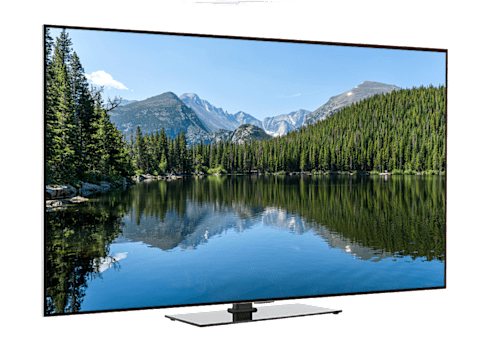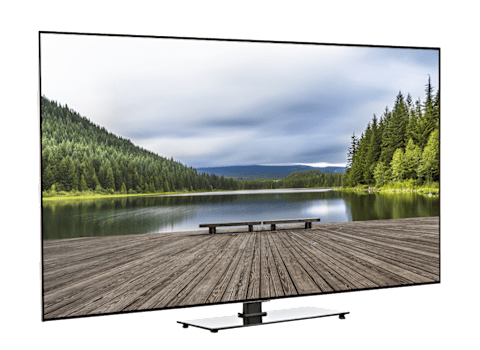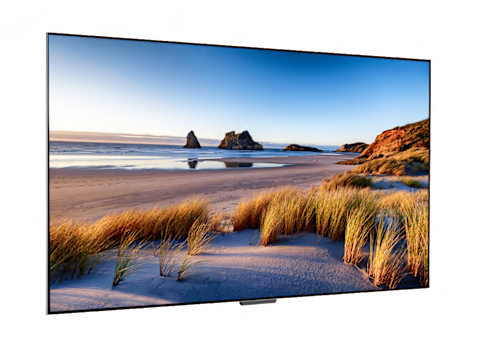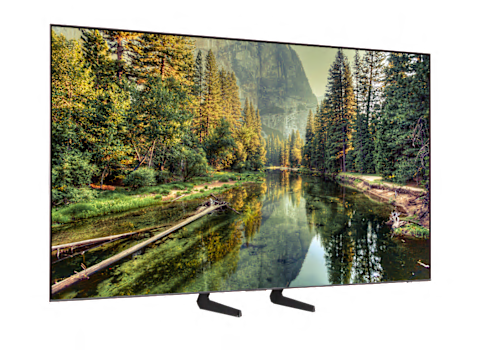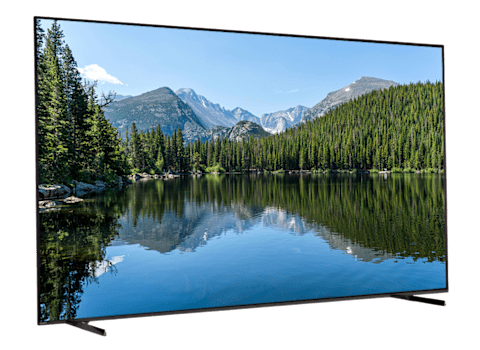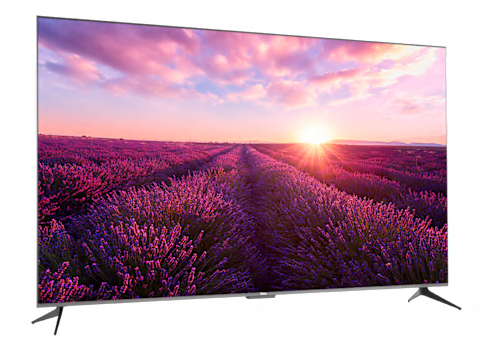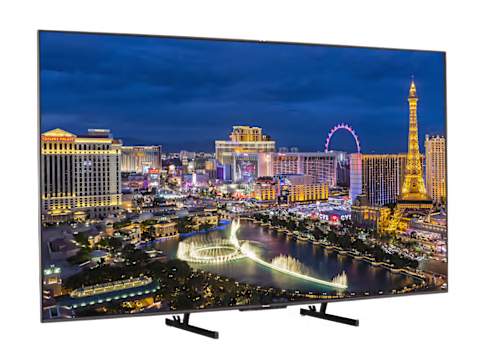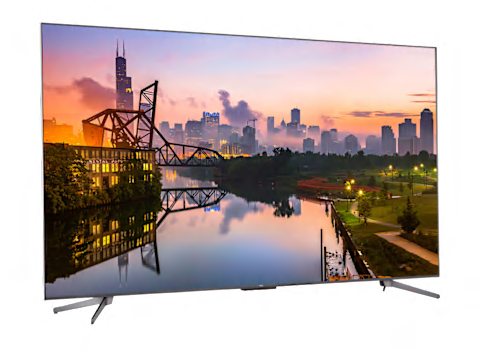Best 75-Inch TVs of 2024
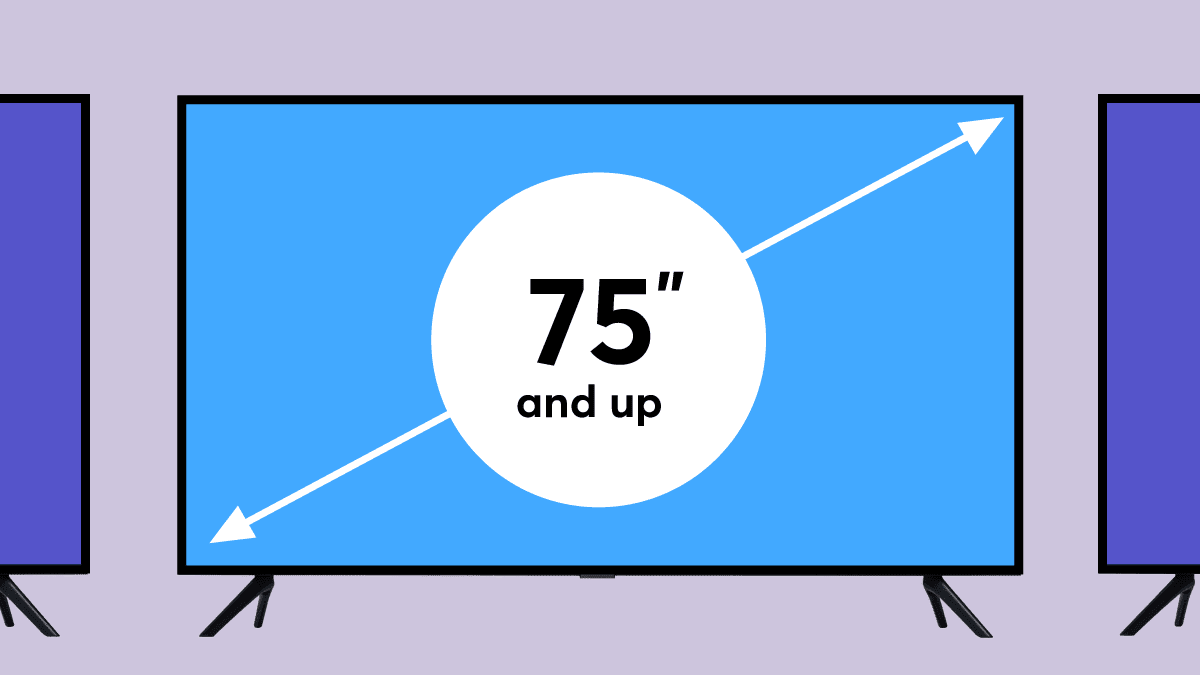
These top-performing 75- and 77-inch TVs include sets from Hisense, LG, Onn, Roku, Samsung, Sony, and TCL—and some cost less than $1,000
People are buying larger TVs these days, including sets with 75-plus-inch screens. CR has more than 80 of these jumbo sets in our ratings.
By James K. Willcox
TV shopping at this time of year can be something of a trying experience: Retailers now have a mix of leftover 2023 sets—often at their lowest prices ever—along with new 2024 sets, many still at their high introductory prices.
But overall, this is a good time to buy a larger set because models 75 inches and larger are seeing the biggest year-over-year price drops. While the very best 75-inch sets remain relatively pricey, you can spend under $1,000 and still get a really enjoyable big-screen TV.
The trade-off for a sub-$1,000 set? You may have to sacrifice high dynamic range (HDR) performance. When done well, HDR can boost a TV’s brightness, contrast, and color, making the pictures on the screen look more like real life. The top sets listed below, from brands including LG, Samsung, and Sony, provide a satisfying HDR experience, but most do tend to be expensive.
Most TVs on the market are LCD models, but OLED TVs have dominated our ratings for several years, providing rich, deep blacks and unlimited viewing angles. Thanks to improvements in backlight technologies, more LCD sets now offer performance that’s nearly as good. In general, OLEDs are more expensive, though prices have been falling recently.
No matter what kind of TV you choose, you can usually pay less by buying any of these models in a smaller screen size. Check out our list of the best 65-inch 4K TVs under $1,000 for more options.
CR digital members can view this list of TVs and sort through our TV ratings by price to find lower-cost models that could be a great fit for their needs. For example, not-so-good sound will tend to bring down a TV’s Overall Score. But that set might be a terrific choice if you intend to use a soundbar. And a set with a narrower viewing angle might not be a problem if you’re able to sit directly in front of it. (You don’t need to be a member to get shopping advice from our TV buying guide.)
Top-Performing 75-Inch TVs
You can’t go wrong with any of these sets. All are top-performing models with great picture quality and the ability to deliver a compelling HDR experience.
LG OLED77G4WUA
The LG OLED65G4WUA is in LG’s pricey series of flagship 4K OLED TVs for 2024, and it’s among the best TVs you can buy. Thanks to its new microlens array (MLA) technology, which LG calls Brightness Booster Max, it’s the brightest LG OLED we’ve tested. This set earns top scores for overall picture quality as well as HDR performance; it also has excellent sound. For gamers, the set supports 4K 144-hertz refresh rates, ALLM, and VRR. Unlike last year’s G3 sets, the 55- and 65-inch G4 models come with a stand. Unlike some LG televisions from previous years, no 2024 LG sets will include an ATSC 3.0 tuner because of a licensing issue. (Those tuners are needed for taking advantage of the newest type of over-the-air signals, received through an antenna. You can buy a separate tuner if that’s important to you.)
LG OLED77G3PUA
The 77-inch LG OLED77G3PUA was the company’s flagship TV in 2023, and like several other sets in this list it’s a top-rated model that aces all our picture-quality tests, including HDR. (LG sets support Dolby Vision but not HDR10+.) It, too, has very good sound. Thanks to microlens array (MLA) OLED TV technology exclusive to this series, it can get brighter than the C3-series sets below it in LG’s TV lineup.
Samsung QN77S90C
The Samsung QN77S90C, a QD OLED set just below the company’s flagship series for 2023, delivers top scores for overall picture quality as well as HDR performance. (The Samsung QN77S90CD model is similar, except it’s sold via warehouse clubs.) It also has very good sound, better, in fact, than Samsung’s flagship model from last year. It includes an ATSC 3.0 tuner for receiving NextGen TV signals through an antenna as they become available across the U.S.
LG OLED77M3PUA
The LG OLED77M3PUA is a top-performing 4K OLED TV with a unique twist: All connections are made via a Zero Connect box, which then sends audio and video signals to the TV wirelessly, so there are no cables other than the power cord. But this innovation comes at a price: This is the most expensive TV in our ratings. It delivers excellent picture quality and HDR performance, plus very good sound. (Nearly any TV’s audio can be improved with the addition of a soundbar.)
Samsung QN77S89C
This 77-inch set, the Samsung QN77S89C, is a 2023 QD-OLED model found only at Best Buy. It’s an excellent TV, with great picture quality and HDR performance, plus very good sound, at a fairly low price, considering its performance. It has fewer features and a different stand from the S90C models available at other retailers. The Samsung QN77S90CD, available at warehouse clubs, performs similarly and is worth considering.
LG OLED77C3PUA
The LG OLED77C3PUA, an OLED TV in a 2023 series just below the G3 sets, has excellent overall picture quality, very good HDR performance, and even better sound than the G3 model above it. (The LG OLED77C3AUA is a similar model but sold at warehouse clubs.)
Sony K75XR90
The 75-inch Sony K75XR90, also known as the Bravia 9, is Sony’s flagship 4K QLED TV for 2024. It aces all our picture-quality tests and has great HDR, thanks to high peak brightness capability. It also has top-notch sound. Like other Sony sets it uses the Google TV smart system, and it comes with an ATSC 3.0 tuner for receiving NextGen TV signals where they are available.
Samsung QN77S95C
The Samsung QN77S95C, the company’s 2023 flagship QD OLED model, earns top marks for picture quality and HDR performance, though it doesn’t sound quite as good as the sets we’ve highlighted above. It’s one of the few models that still uses Samsung’s external One Connect box, where all connections are made.
Sony XR-77A80L
The Sony XR-77A80L is the company’s entry-level OLED series for 2023 and has great overall picture quality, with HDR performance just below the very best sets. As with all 2023 Sony TVs, it uses the Google TV smart platform, with Google Assistant and Chromecast built in. The Sony XR-77A80CL is similar, but it’s sold at warehouse clubs.
Best 75-Inch TVs Under $1,000
If you want to spend less, you can still get a big-screen TV that delivers very good to excellent overall picture quality. The trade-off is a more limited HDR experience.
Roku 75R6A5R
The Roku 75R6A5R is a 2023 model that’s one of the first sets designed and made by Roku. The TV does very well overall in our tests—it earns top marks for overall picture quality, though not HDR—and has very good sound.
Samsung QN75Q60CD
The Samsung QN75Q60CD was the company’s entry-level QLED TV for 2023, and it’s sold via warehouse clubs. (You typically have to sign in to see its price.) It lacks the Mini LED backlights found in the company’s Neo QLED sets but performs well overall. It does especially well for ultra-high definition picture quality, but its HDR performance, like some other choices in this section, is below the top sets listed above. The Samsung QN75Q60C, sold in electronics stores, performs similarly, but right now it costs just a bit over $1,000.
Hisense 75U7K
The Hisense 75U7K is 75-inch midtier set from Hisense, a 2023 model. It delivers very good overall picture quality, though only limited HDR performance. It also has very good sound. It supports both Dolby Vision and HDR10+ HDR formats, and has a wide viewing angle for an LCD-based set. It includes an ATSC 3.0 tuner for receiving NextGen TV off-air signals. The Hisense 75U75K model is similar but sold via warehouse clubs, and its sound isn’t quite as good.
LG 75UQ7590PUB
The LG 75UQ7590PUB, an entry-level 4K set, offers performance comparable to the Hisense set above, with very good overall picture quality but a limited HDR experience. Unlike some other LG sets’, its viewing angle is fairly limited.
TCL 75Q750G
The TCL 75Q750G is a midtier 4K Google TV for 2023 that offers very good overall picture quality and about the same HDR performance as the Roku. Though it lacks the Mini LEDs found in the 8-series sets, it does have a full-array LED backlight with a good number of local dimming zones. Right now its price has crept up just above the $1,000 cutoff mark, but we’ve seen it for less, so we’re keeping it in the listing.
How CR Tests TVs
The TV test team at Consumer Reports puts every TV through a battery of tests in our TV labs.
We first set up each TV and carefully note all its key features, such as resolution, number of HDMI inputs, and support for streaming services and voice-enabled digital assistants. We then set up the TV for optimal performance using the set’s built-in presets and picture controls. We use objective tests and measurements, as well as real-world video clips and subjective evaluations, to determine picture detail, color accuracy, and contrast.
We compare each TV with one of several fully calibrated reference TVs in our labs.
HDR, short for high dynamic range, is now found in a vast majority of midsized and large sets. HDR increases the contrast between the brightest whites and the darkest blacks a TV can produce. To do a good job with HDR video, a TV needs to get bright enough to display brighter, more colorful images with greater contrast and a wider array of colors, much closer to what we see in real life.
To test HDR performance, we measure a TV’s peak brightness using a $40,000 Photo Research PR-740 spectroradiometer (also used for measurements of fine colors and deep black tones), and industry standard and proprietary test patterns. We then evaluate the TV’s HDR performance with very dark and very bright scenes, as well as with video clips that feature an extended range of colors.
For viewing angle, we evaluate picture quality for clarity, color accuracy, and contrast at various horizontal and vertical viewing angles. Motion-blur tests, done at various speeds, are an evaluation of how well a TV can produce a blur-free image during motion scenes.
Sound quality is evaluated using a TV’s built-in speakers with subjective testing by a trained listening panel, with support from audio test equipment. We listen for the overall quality of sound, the depth of bass, effective volume levels, and audible distortion during dialogue, music, and movie soundtracks. (Many TVs have disappointing sound in comparison with their image quality. You can address that by adding a soundbar.)
The versatility score is a measure of a TV’s useful features, including—but not limited to—access to streaming services, the ability to work with digital voice assistants, the number of HDMI and USB inputs, and support for various media.
Finally, in recent years, we’ve added data privacy and security scores for all the TVs we test. Now that TVs routinely connect to the internet, data privacy and security have become concerns for consumers.
Consumer Reports evaluates the various ways TV brands collect, use, and share consumer data, how well they protect it, and how transparent they are about their data practices. We encourage TV makers to ship their sets to consumers with the optimal privacy settings turned on by default. You can also adjust the settings yourself.
Consumer Reports is an independent, nonprofit organization that works side by side with consumers to create a fairer, safer, and healthier world. CR does not endorse products or services, and does not accept advertising. Copyright © 2024, Consumer Reports, Inc.
Source link


